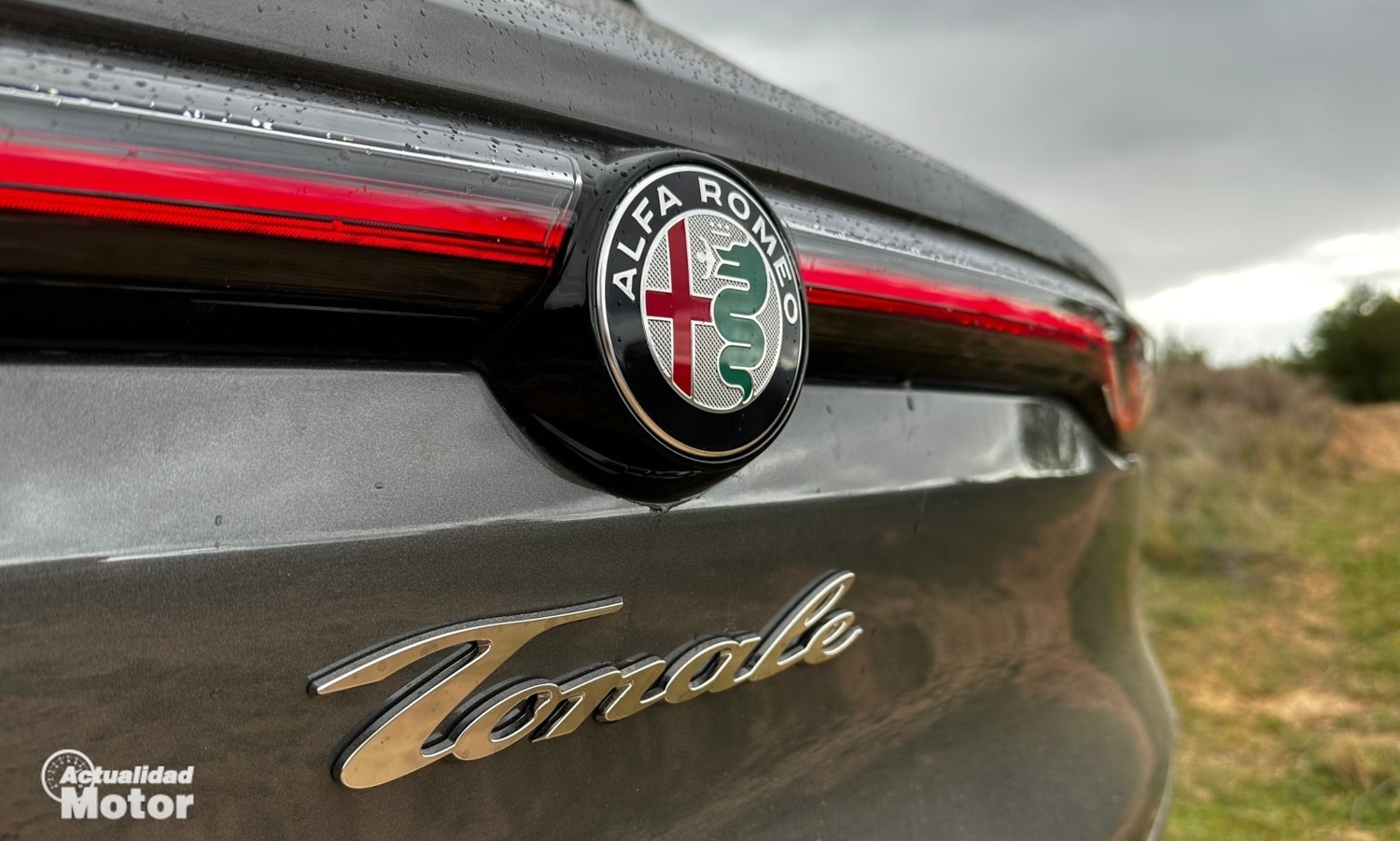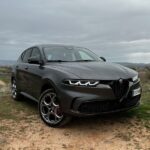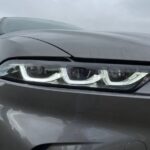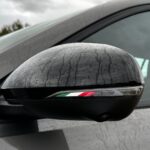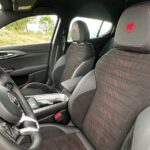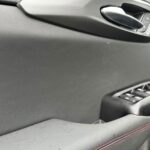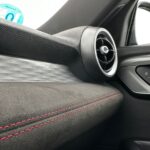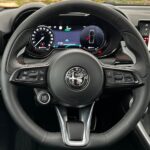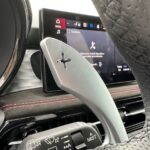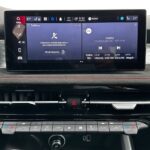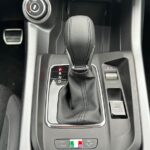
El Tonale Plug-in Hybrid Q4 is the version with plug-in hybrid powertrain of the Alfa Romeo tonal, a midsize SUV and the second car with this type of bodywork offered by the Italian brand in its range (the first was the Stelvio, larger). Until now, there was no PHEV in Alfa. It has five doors and five seats. It's about a spacious car with a high build quality where, in addition, the great effort that has been made in terms of design and dynamic behavior is perceived, something common in vehicles of this manufacturer. While not without its flaws, it is the product that the firm has relaunched. You can read more information about this in our article “2022, the year that gave wings to Alfa Romeo: a review of its current situation".
Although the Tonale is also for sale with a 130 CV diesel engine (DGT C label) and two microhybridized gasoline engines of 130 and 160 CV respectively (ECO label), this time we will focus on the 280 CV PHEV ( ZERO label), as it is the latest release of Alfa and the one we have tested. It combines a gasoline engine and an electric one. In theory, with the battery fully charged, You can travel 69 km without spending fuel. For now, it's about the only version of this SUV with four-wheel drive and is available with three trim levels and equipment from 51.000 euros, a price below the average of its market segment. In general, we like it and consider it to be a good buy.
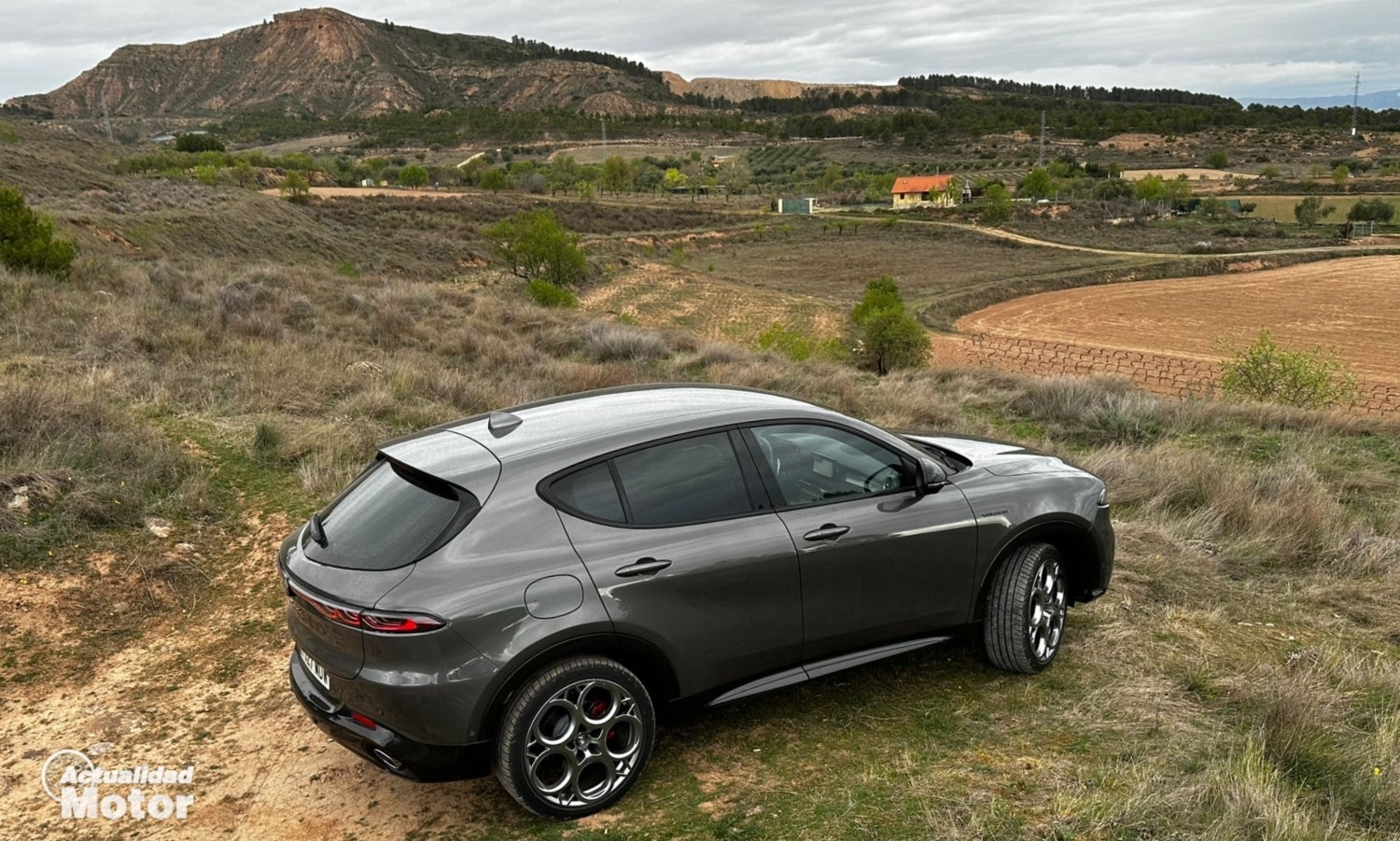
One of the most spacious SUVs in its class with one of the poorest trunks
The Tonale PHEV measures 4,53 meters long, 1,84 wide and 1,60 high with a wheelbase of 2,64 meters. For its construction the platform of the Jeep Compass, but the tuning of this Alfa Romeo it is very far, for good, from what it has been able to offer the american brand. Despite being normal exterior dimensions for the category in which it competes, Its cabin is better optimized than in most of its competitors without being outstanding. This has particularly positive effects on the second row of seats, whose position has not changed compared to a conventional Tonale. Count with one good leg and shoulder room, not so much for the head. At practically the same size, there are even broader alternatives. It is the case of KIA Sportage, the DS 7 or of Volkswagen Tiguan, all with plug-in hybrid versions.
To locate the battery, the trunk has been penalized, whose capacity is 115 liters less than that of a Tonale diesel or gasoline MHEV: it goes from 500 to 385 liters. It is not trivial, because we are talking about a reduction of almost a quarter on the volume presented by the standard model. only the CUPRA Formentor PHEV has a smaller trunk in this class. With everything and although adjusted, it can be enough to store the luggage of four people for a weekend, never again (it is not advisable to make long trips occupying the central square, quite uncomfortable even when approved). In exchange for this limitation, the rear backrests can be folded down in a 60:40 ratio to achieve a load space of 1.430 liters, ideal for transporting large objects. Besides, the tailgate is electric and has a hands-free function as standard. It is much appreciated, since the mouth is excessively high.
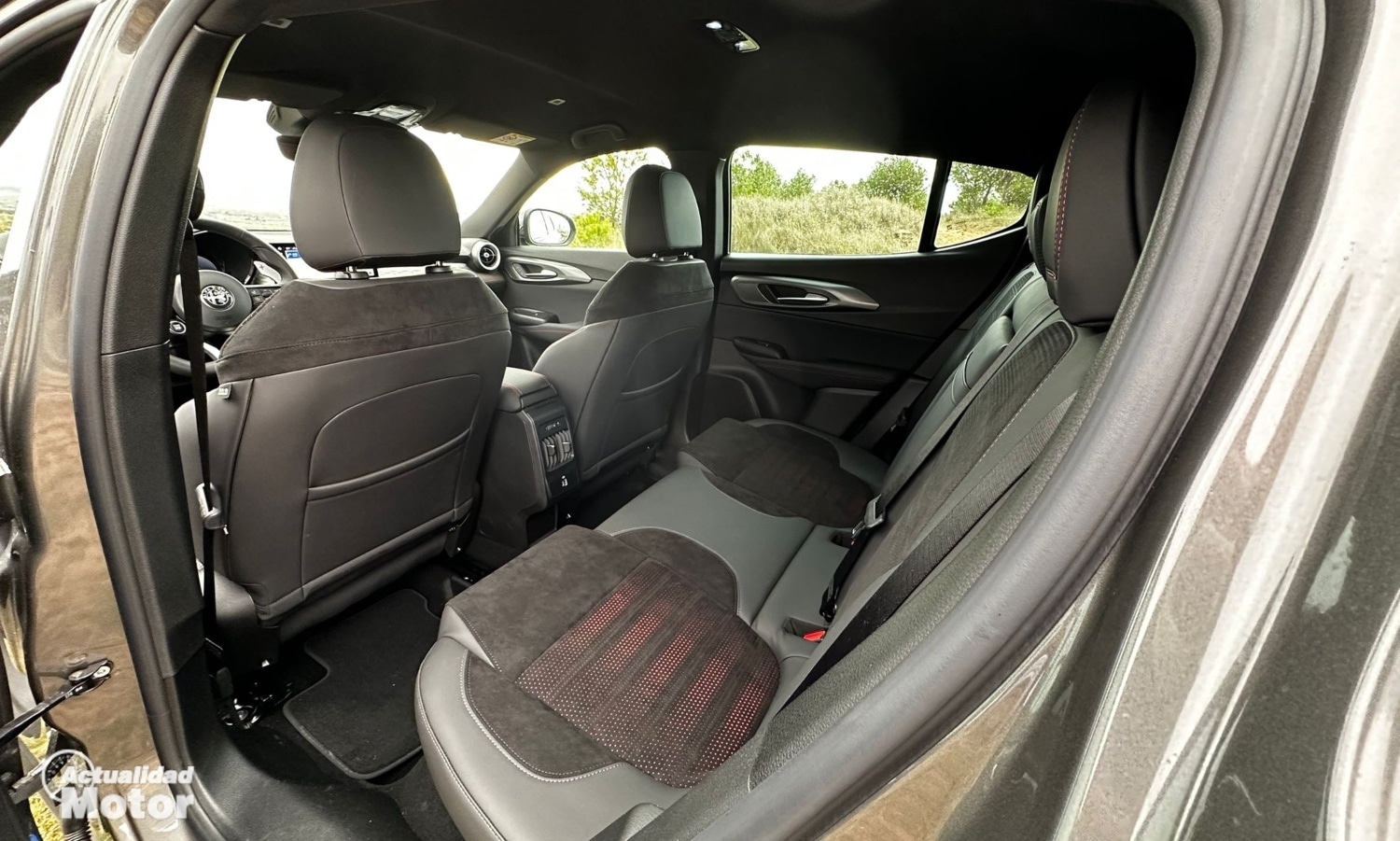
Good finishes and a lot of technology: elegance and equipment at the level of Alfa
The Tonale, PHEV or not, is a car full of details that give off sportiness and elegance, even a certain level of luxury. Outside, you can see the Italian flags in the mirrors, the red brake calipers (four pistons) with the name of the brand in calligraphic style and the black moldings that contrast with the paint of the rest of the body (you can choose between six colors), etc. Here, to distinguish the plug-in hybrid version, you have to look at the round chrome exhaust outlets, or at the “Biscione” (snake) that appears on the left rear window with a lightning bolt (symbol of electricity) in the place where the usual child would go being eaten. It looks horrible, but it is what the Alfa Romeo logo represents. The sculptural shapes of the panels, as well as the proportions of the vehicle, are very striking to us.
Inside, The materials used are good. Also the settings. Everything is pleasant to the touch and ergonomically located. We believe that, at least in the highest trim levels, it is an SUV that has nothing to envy its most renowned rivals: Listen Q3, BMW X1, Mercedes GLA y Volvo XC40. Maybe the seats could be more comfortable (yes, they support the body very well) and the less non-descript door skins, but perceived quality is high nonetheless. In progress, there is evidence of a high rolling quality, something to which better acoustic insulation contributes especially than, for example, that of the Stelvio, its “big brother”. It can be stated without fear that it is a solid, hermetic and moderately comfortable carand. The cabin could be brighter.
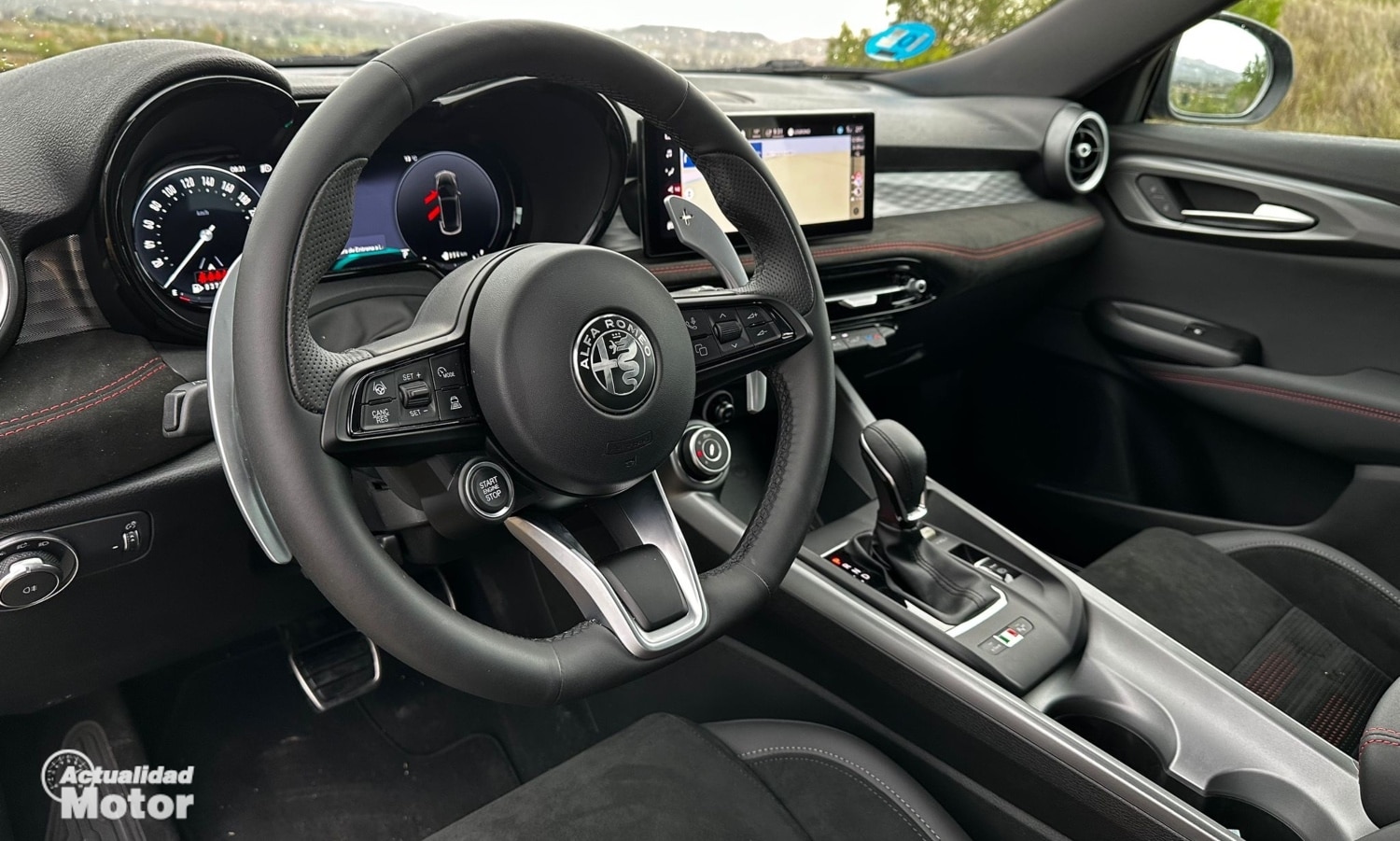
The multimedia system works correctly, but does not stand out for nothing in particular (there are better ones). Resolution, mobile connectivity (wireless) and resistance to light reflections are good. You can refine the answer, which is not very fast, as well as the ease of use, creating a somewhat more intuitive interface that allows you to control all the functions in motion (some are only activated, for safety reasons, when the vehicle is stopped). There are some that are remote from the MyAlfaConnect app. It is also possible to integrate with the amazon alexa virtual assistant. It is to be appreciated that the physical buttons for climate control, which also remain at hand height. However, we regret that the dome that has been placed over the digital instrument cluster (customizable) is so prominent and forces you to take your eyes off the road too much. It is because of that a Head-Up Display is missing.
As to , the Tonale PHEV can be configured with three grades of equipment: Ti, Speciale and Veloce. The second is a launch edition that will only remain in the range until May 2023.. From the basic, this car already has a wide range of driving aids (optionally expandable), ISOFIX anchorages in the side rear seats, matrix LED headlights, anti-glare mirror, driving mode selector, keyless entry and start, dual-zone air conditioning with rear ventilation outlets, tinted rear windows, ambient lighting, two infotainment screens (12" cockpit and 10" touch panel), fabric upholstery (leather and Alcantara with extra cost), wireless charger for phones, front and rear USB connections, vocal commands, integrated browser with connected services, 18-inch wheels (19 or 20 paying more) and AC charger on board. For extra money, various utility items can be installed, some of which are standard on higher trims: upgraded sound system, sunroof, power, ventilated and heated seats, etc.
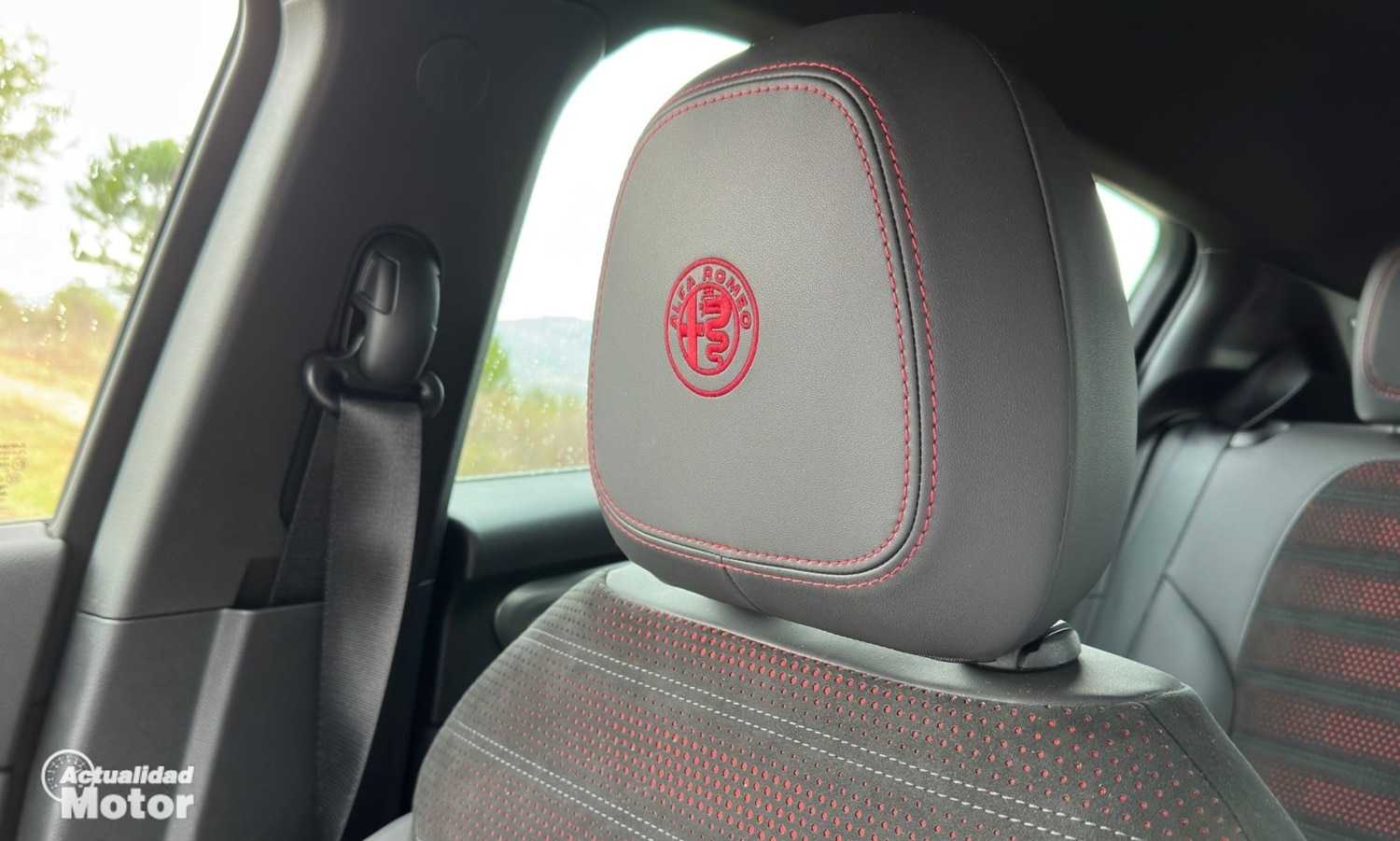
280 CV, 69 km of electric autonomy and the only Tonale with Q4 all-wheel drive
El PHEV powertrain of this Tonale is made up of a gasoline engine turbocharged with four cylinders and 1,3 liter displacement that yields 180 CV (it is, by itself, more powerful than any other version of the model) and for an electric one that develops 122 CV. The first is located above the front axle; the second, in the rear. It is because of that motor skills are achieved in both, which only occurs in the PHEV. With a combined maximum power of 280 hpit is possible to speed up from 0 to 100 km / h in 6,2 seconds and reach 206 km/h top speed (limited to 135 km/h in EV circulation mode). These are correct performance figures considering that it is a vehicle that, empty, weighs more than 1,8 tons. The transmission is a 6-speed automatic. and it works through a torque converter.
To power the electric drive, a battery, between axles (although much closer to the later one), whose gross storage capacity is 15,5 kWh (12 net or useful). With it, the Tonale PHEV can go 69 km without starting the main engine at all. This is the average distance without emissions approved under the WLTP procedure, but in practice we have found that it is very difficult to cover more than 50 km in these circumstances (the joint autonomy is usually 550 km without practicing markedly efficient driving). said pile can be recharged at a maximum of 7,4 kW in alternating current, the usual in a plug-in hybrid. At that power, full power (0-100%) can be recovered in 2,5 hours.
It should be said that, regardless of what Alfa Romeo indicates (1,1 l/100 km on average), we have obtained a fuel consumption of 5,7 l/100 km during our test, completely depleting the accumulator at 46 km on a journey of more than 200. This means that, when only the thermal propellant is used and a large dead pile is hauled, the fuel expense is approximately between 7 and 9 l/100 km according to the conditions. These are worse when the speed increases and, therefore, the aerodynamic resistance. To help alleviate this effect, the manufacturer has placed active blinds behind the front grill that intelligently interrupt (according to the cooling demands of the gasoline engine) the passage of air into the mechanical compartment.
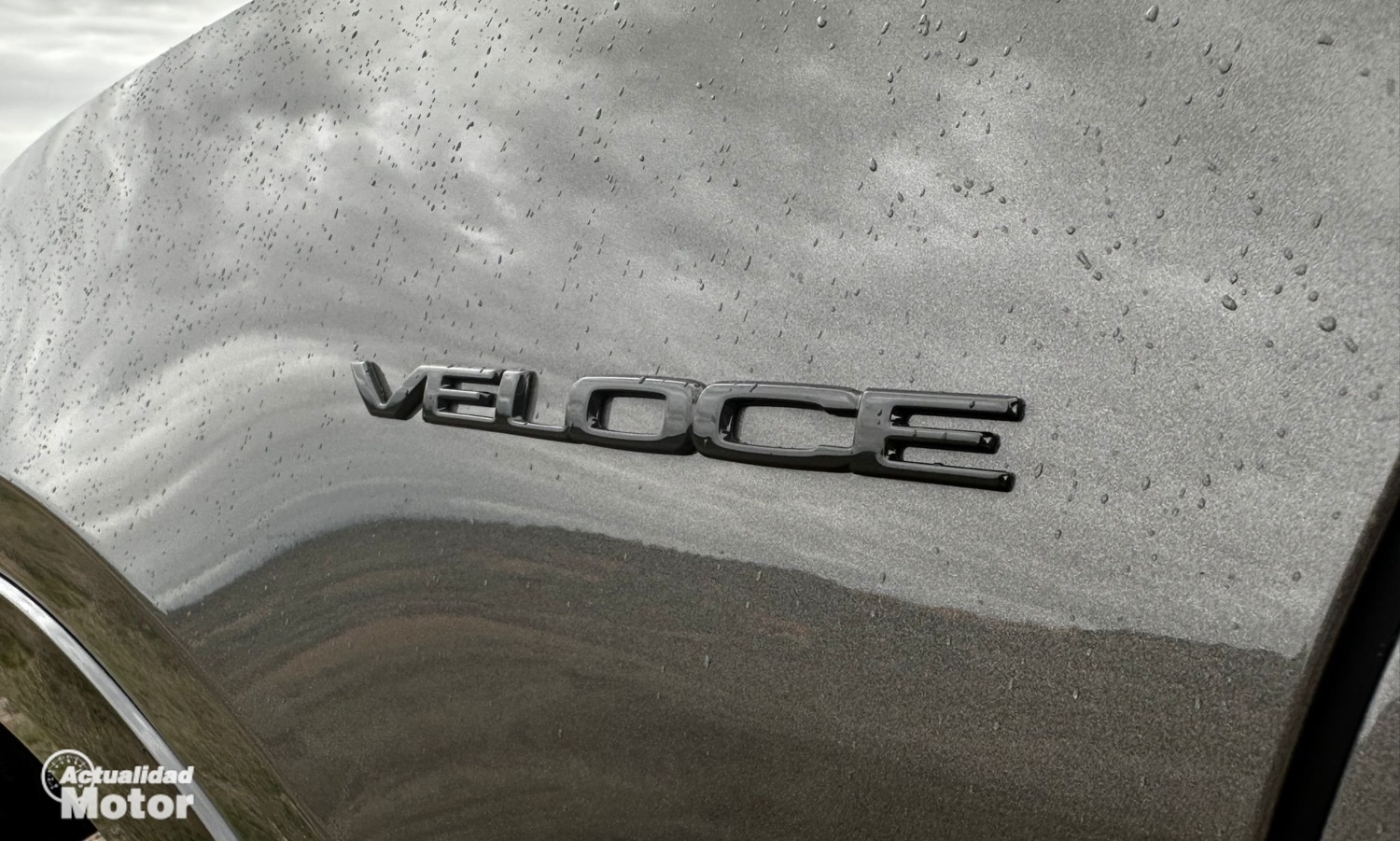
Driving impressions: so good that you will miss a traditional engine
We will be clear: there is no plug-in hybrid that performs better on asphalt than the Tonale in this category From the market. We regret sounding like Alfa Romeo sycophants, but the reality is that the firm has made a excellent work on the chassis of this car, especially if what you really wanted was to build a Sporty SUV. The set-up of the suspension is firm, but not dry or with deficiencies in the filtering of the irregularities of the road, which would not be possible without some high quality shock absorbers. In the Veloce finish, they have variable hardness as standard thanks to double-stage valves (it allows two settings: hard or "soft").
The springs, shorter than normal in such an SUV, and thicker stabilizer bars, they give very little body roll, which maximizes grip and stability. It is perceived very fast and easy in the changes of support, although it limits its weight (near the limit of adhesion, understeer is noticeable): Other versions of the Tonale work even better from a dynamic point of view. In fact, according to the Italian brand, no changes have been made to the rear axle despite having to support a much greater load. Nor does it vary, with respect to a normal Tonale, the low center of gravity or the almost perfect distribution of weights (53/47), two key characteristics for a dominant result in its class. In return, its free height to the ground (14 cm) is not recommended for driving on steep terrain.
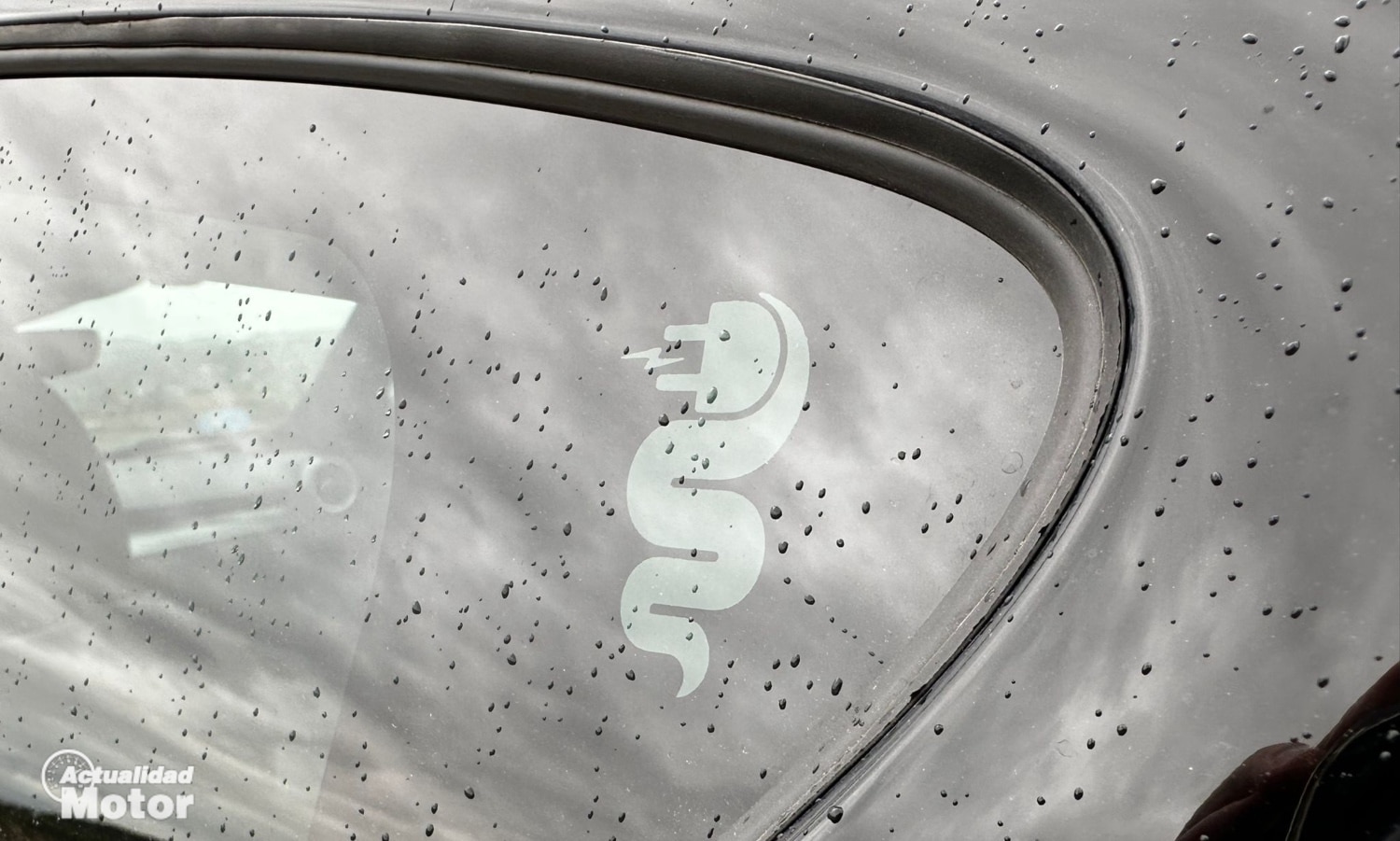
For its part, the steering has a heavy, satisfying and precise feel that, unlike what happens, no longer in SUVs but in the majority of current passenger cars, It is very transparent and gives the driver many clues about what is happening under the front axle. This has been achieved through light electronic assistance and high gear ratio, from 14,8 to 1 (this term refers to the relationship between the turning of the steering wheel and the change in trajectory of the wheels). Also Both the deceleration capacity and the modularity provided by the brake pedal are noteworthy despite having a section of the route for energy regeneration. On the other hand, and without being able to stop considering himself "all an Alpha", maneuverability and rear visibility could be improved the result of a design and geometries that somewhat sacrifice functionality.
With such a good balance between comfort and agility, the PHEV powertrain is out of tune. We are not talking about its benefits, which are good, but about the way in which it delivers them. The shift paddles behind the wheel, which are huge, metallic and fixed, act with delay (generally streaming is lazy), while The gasoline engine, when it works without the help of the rear electric, greatly abuses its supercharging to make up for a shortage of displacement. This generates more violent reactions than desirable when the accelerator is stepped on. We can't hide it how well would this car run with a pure gasoline propellant of 2 liters (like the Stelvio), without hybridizations or concessions to emission regulations that the firms have to comply with. Yes indeed, the transition from thermal to electrical operation and vice versa is smooth.
Driving aggressively it is difficult to unhook the rear axle that, as long as there is battery charge left, it seems to be constantly in sync with the direction of travel, making it even more of a car effective from a management point of view relative to a non-PHEV Tonale. DNA profiles, selectable from a roulette located in the center console, mainly affect the powertrain, battery charge management, steering, traction and stability controls, the sensitivity of the two pedals, the torque vector control (all based on electronics and brakes, since it does not have self-locking) and the suspension if it is a unit that incorporates the already mentioned configurable hardness damping. During our test, one of the rear lights melted.
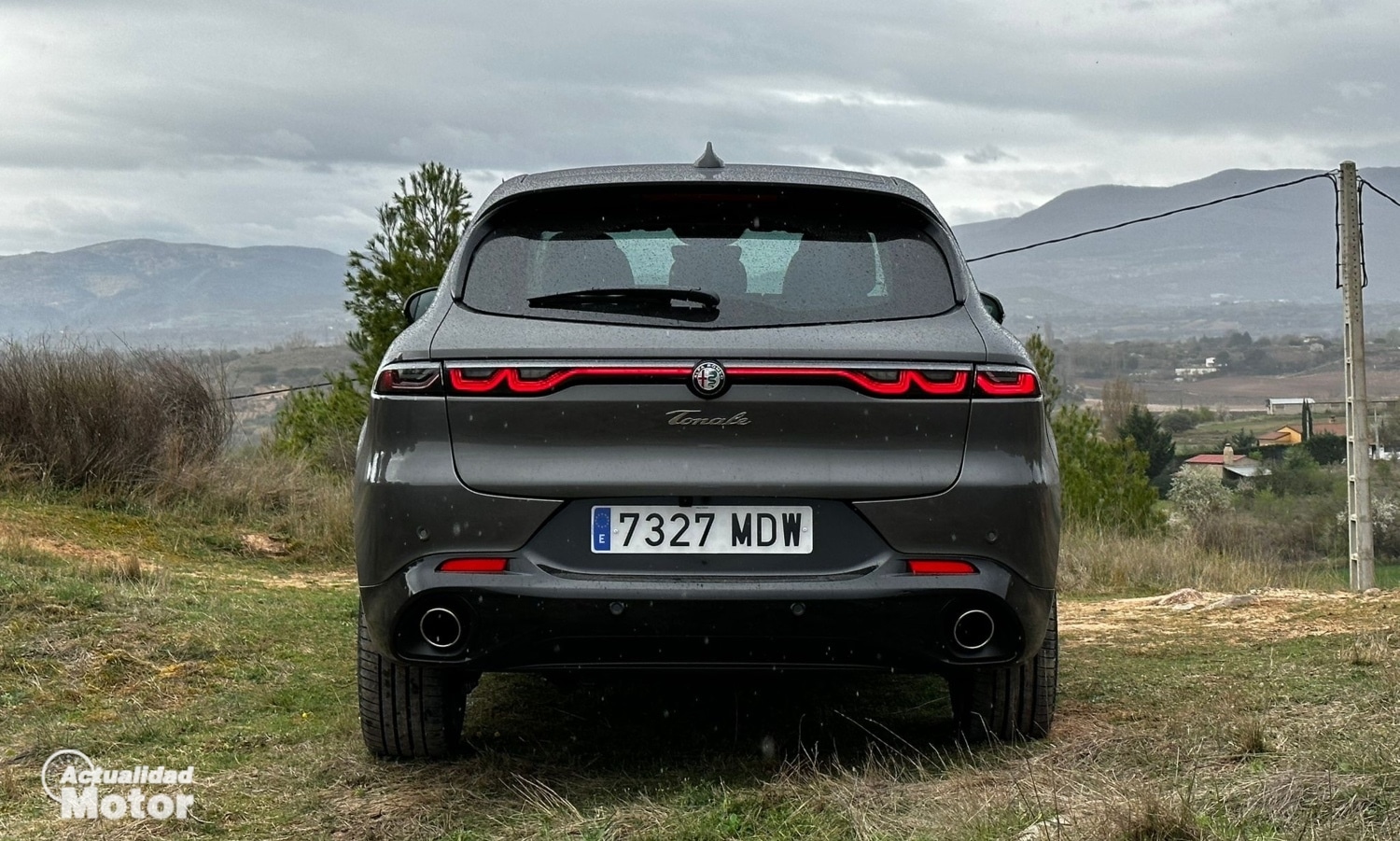
Alfa Romeo Tonale PHEV Q4 prices: adjusted and consistent with everything it offers
A Tonale PHEV can be ordered since January of 2023. Until May of the same year, the acquisition cost of the Alfa Romeo Tonale starts at 51.000 euros, which is the amount that the brand asks for the Speciale edition. Next, the price will start at 53.500 euros, money that will have to be paid to buy the Ti finish. To obtain the Veloce (top of the range), it will be necessary to pay 56.000 euros. In the latter case, the manufacturer's subsidiary in Spain offers a 36-month financing with a fee of 399 euros if an entry close to 10.000 euros is provided. No supply problems are foreseen, since the production of this model has recently been expanded.
Compared to its main alternatives, it is an SUV with a fair price (which is not cheap). It is even more so if one takes into account that it is very well equipped from the base, which has some very high general construction qualities and that his The relationship between power and electrical autonomy is higher than the average of its competitors. In fact, there is no “premium” rival that comes close in the economic aspect. To find a similar, but more affordable option, you have to choose a Hyundai Tucson PHEV. With 265 CV and all-wheel drive, it costs around 45.000 euros, but its level of sensations, performance and refinement is light years ahead of the Tonale. Not worth it.
Conclusion: spacious, refined and pleasant despite its lack of technical harmony
If you are passionate about driving, but have a medium-sized family with the space needs that this entails; if you like the robust SUV aesthetic, but you value the fact of being able to get around without consuming a drop of gasoline most days (you'll need to have a charger in your garage); if you appreciate the design, but no less the quality. Those are essentially the essential requirements that any potential customer of the Alfa Romeo Tonale PHEV must have, the car of these characteristics with the best dynamics. Despite the sporting sensations it conveys, does not give up a high degree of safety and also efficiency. All this for a very attractive price and that we would pay at ease. Of course, do not look for purity and the perfect technical pairing to which the Turin firm had accustomed us. Hybridization has harmed them.
